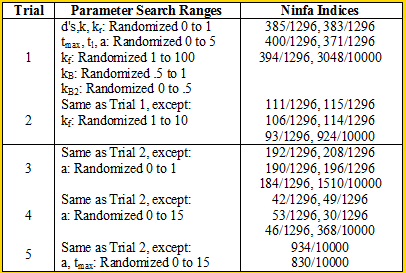Team:Michigan/Project/Modeling/Model2.html
From 2008.igem.org
|
|---|
|
Sequestillator Model 2: A More Complicated ModelWhile Model 1 gave us some important results (mainly: need a low Kd for oscillations to occur) , we decided to look at more complete model that accounted for some of the dimerizations the proteins undergo: Parameters
Functions
Variables
|
|---|
 "
"


